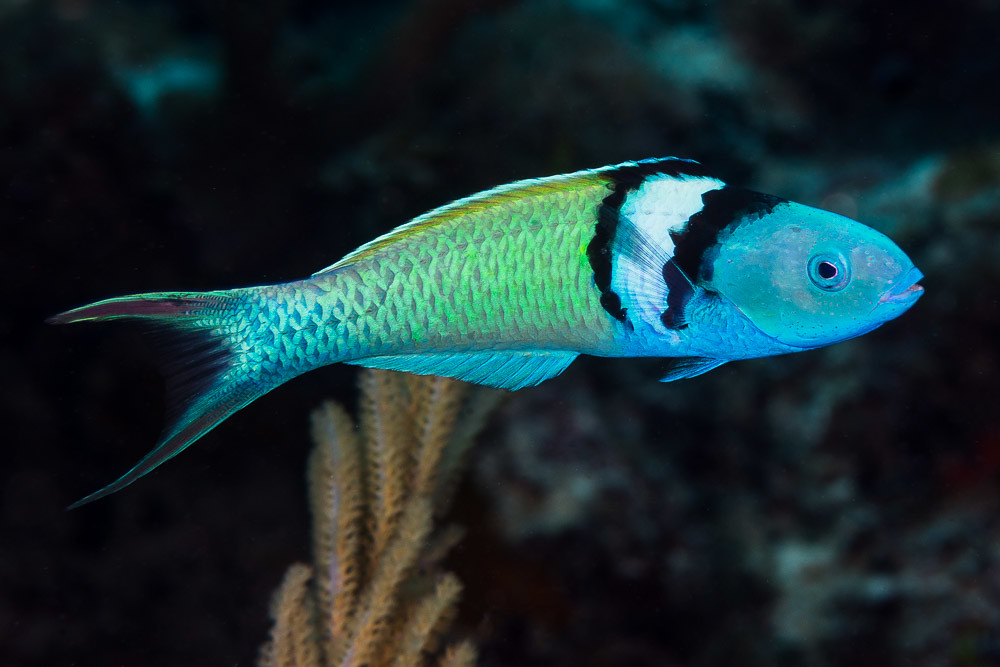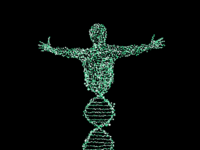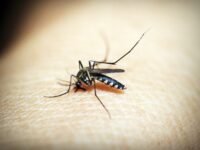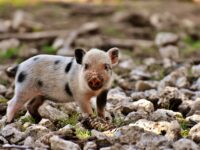What if “male” and “female” were only temporary states? In the worlds of fish, snails, and slugs, animals can have sexual plasticity: the ability to shift between sexes throughout their lives. Also known as sequential hermaphroditism, the advantages and costs of this reproductive strategy remain debated. There are two main types of sequential hermaphroditism: protogyny, in which organisms born female change their sex to male as they mature, and protandry, in which organisms begin life as male and mature to be female. Though sequential hermaphroditism is rare, evaluating the underlying reasons for these changing biological functions can help understand evolutionary sex change, mating systems, and social structures.
The most common form of sequential hermaphroditism is protogyny, which is driven by male size advantage. According to the size advantage model, sexual change is adaptive when reproductive success is greater as one sex when smaller and another sex when older (and often larger). Therefore, the timing of the sex change ensures optimal reproductive success over the organism’s lifetime. Typically, this change occurs later in life in response to internal or external triggers. Since male reproductive success increases with age and it is thought to be advantageous for a male organism’s body to be larger, this sex change promotes reproductive success longer in life.
Bluehead wrasse are highly social and polygamous fish that school in thousands in the reefs of the Atlantic Ocean. Their coloration varies throughout their lifetime, but they get their name from their “supermale” form, featuring a bright blue head, three stripes of black and white, and a golden body. As prime examples of protogynous animals, only a small percentage of males —or females who become males — reach this final phase. Dominant males take the role of defending egg spawning sites, where females often stay. When a dominant male is lost, sex change is stimulated in the largest female of the social group. This comes with rapidly increasing aggressive and male-typical courtship behavior, anatomical changes, and coloration into the supermale form after which they are named. In just 10 days, the largest females become fertile males.
Though sequential hermaphroditism is rare, evaluating the underlying reasons for these changing biological functions can help understand evolutionary sex change, mating systems, and social structures.
Interestingly, male development is also under social control. Most juvenile bluehead wrasse develop as females, but those that develop as males tend to mimic females and instead employ a “sneaker” mating tactic to contribute to the development of their species. Dr. Erica Todd, a researcher at the University of Otago in Dunedin, New Zealand studying sneaker males, found that “many of the genes critical for male sex hormone production were turned off – making them look female.” Despite their appearance and behavior as females, these sneaker males are reproductively potent, holding 60 percent more sperm than territorial males.
“Sneaker males express genes for neuroplasticity that may help them elude territorial males and steal mating opportunities with females,” Todd said, speaking to the unique mechanisms that help these males overcome a disadvantageous size. These males tend to develop on high-density reefs where larger males are less effective at dominating mating opportunities than usual. The dynamic of bluehead wrasse males, like in many other protogynous species, includes dominant supermales who use territorial aggression to monopolize matings and smaller sneaker males whose physiology allows them to steal these mating opportunities.
Sexual change is adaptive when reproductive success is greater as one sex when smaller and another sex when older (and often larger)
Protandry, on the other hand, favors a female-biased reproductive size advantage. This phenomenon is less common than protogyny and is usually associated with mating systems without male territorial defense or sperm competition, such as monogamous or random mating systems. As an inverse to the male size advantage of protogyny, the positive relationship between female fertility and body size makes male-to-female sex change more adaptive.
Clownfish are commonly studied as examples of protandrous sex change. Each social group holds one monogamous mating pair and smaller, sexually immature males. When the dominant female is lost, it prompts her partner, the largest male in the group, to change into the female sex. It also prompts the maturation of the most dominant, immature fish as the new breeding male. Due to limited habitat space in sea anemones, body size is restricted, and there is greater reproductive value if the larger fish of the pair is female.
Despite numerous studies on sequentially hermaphroditic species, underlying causes and explanations for these behaviors are still largely theoretical. What impacts does social control have on genetic expression of characteristics or functions? Could sequential hermaphroditism be stimulated in other species under certain conditions? Many exciting questions remain unanswered about this fascinating phenomenon that may shed light on how sex evolves among species.
Sexual Development (2016). DOI: 10.1159/000449297
Scientific Reports (2016). DOI: 10.1038/srep29439
Molecular Biology and Evolution (2017). DOI: 10.1093/molbev/msx293






